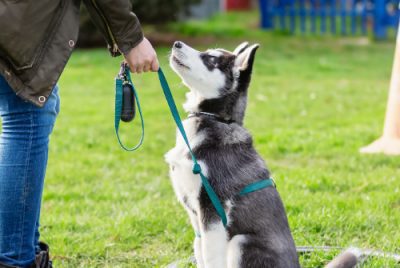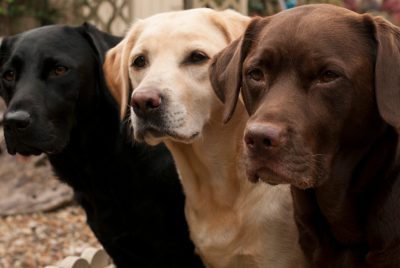How to Deal with Separation Anxiety in Dogs
Post Disclaimer
We may earn a commission for purchases made using our links. Please see our Disclaimer to learn more.
We often think of our canine pals as part of the family. But what happens when your fur-baby experiences distress when left alone? This is often a sign of separation anxiety in dogs. Let’s delve into understanding it better and discuss how we can help our four-legged friends cope.
Understanding Separation Anxiety in Dogs
Symptoms of Separation Anxiety
Have you ever come home to find your dog has been destructive, or your neighbors complain about excessive barking? Maybe Fido has had some “accidents” despite being toilet trained? These could all be signs of separation anxiety in your dog. Other symptoms might include drooling, pacing, and attempts to escape.
Causes of Separation Anxiety
Separation anxiety can stem from various causes, like a sudden change in schedule, moving homes, or the loss of a family member. It’s particularly common in rescue dogs, who might have faced abandonment or multiple re-homing. When I adopted my dog Brandy at 9 months old, she had terrible anxiety. She ripped apart her crate cutting herself. Thank goodness it was not serious. Moving into a stranger’s home took some time to get used to. Today she is very comfortable in her environment.
How to Prevent Separation Anxiety
Alright, so we know what we’re dealing with. Now, how can we prevent it?
Socialization Tips
Socializing your pup from a young age is essential. It’s like teaching your kid to make friends – the more they interact with others, the more confident they become in different situations.
Training for Independence
Teaching your dog to be alone is as important as teaching them to sit or stay. Start by leaving your dog alone for short periods and gradually increase the time. This way, they learn that it’s okay to be alone and that you’ll always return.
Treating Existing Separation Anxiety
But what if your dog already has separation anxiety? Don’t worry, we can work on that too.
Behavior Modification Techniques
Counterconditioning and desensitization techniques can help change your dog’s response to being alone. It’s like turning the tables – your dog starts associating alone time with positive experiences.
Professional Help: When to Seek It
If your dog’s anxiety seems severe or isn’t improving with training, it’s time to seek help from a professional, such as a Certified Applied Animal Behaviorist or a veterinary behaviorist.
Medications and Natural Remedies
In some cases, vets might prescribe medications to help manage your dog’s anxiety. Natural remedies, such as calming treats or diffusers, can also support your efforts. Give them a special treat when you leave the house. Maybe a Kong filled with peanut butter may just be the trick.
Living with a Dog with Separation Anxiety
Creating a Safe Space
Create a cozy, safe space for your dog where they can relax when you’re not home. Some dogs find comfort in crates, while others might prefer a specific room.
Exercise and Diet Considerations
A well-exercised dog is a happy dog. Regular exercise and a balanced diet can also help manage anxiety symptoms.
Conclusion
Dealing with a dog’s separation anxiety can be challenging, but remember, you’re not alone, and help is available. We can help our furry friends live a less anxious and more joyous life with patience, consistency, and love.
Please check out the Amercian Kennel Club article on how to stop Separation for more information. Separation Anxiety in Dogs: How to Stop Separation Anxiety in Dogs (akc.org)
Frequently Asked Questions
What causes separation anxiety in dogs?
Separation anxiety in dogs can be triggered by a variety of factors. It’s often caused by a sudden change in the dog’s life, such as a change in schedule, moving to a new home, or the loss of a family member. It can also occur in dogs that have been re-homed multiple times or those that have been abandoned or neglected. It’s important to remember that every dog is unique, so what causes anxiety in one dog might not be the same for another.
How can I prevent my dog from developing separation anxiety?
Preventing separation anxiety in dogs starts with proper training and socialization from a young age. Encourage your dog to spend time independently, and gradually increase the amount of time they spend alone. This helps them understand that being alone is not a negative experience. A consistent routine can also provide a sense of security and reduce anxiety.
What are some treatment options for dogs with separation anxiety?
Treatment options for dogs with separation anxiety include behavior modification techniques like desensitization and counterconditioning. These help change the dog’s response to being left alone. In severe cases, a professional animal behaviorist may be needed. Medications and natural remedies, such as calming treats or diffusers, can also be beneficial in managing anxiety symptoms.
How can I create a safe space for my dog with separation anxiety?
Creating a safe space for a dog with separation anxiety involves making a specific area of your home a relaxing and comforting place. This could be a crate, a specific room, or even a designated bed. Provide familiar items like their favorite toys or blankets. Some dogs may also find comfort in clothing items that smell like you.
Can exercise and diet impact a dog’s separation anxiety?
Yes, both exercise and diet can have a significant impact on a dog’s separation anxiety. Regular physical activity can help burn off excess energy and reduce anxiety. A balanced diet is also crucial for your dog’s overall health and well-being. In some cases, certain foods can contribute to anxiety, so it might be helpful to consult with a vet about the best dietary choices for your anxious dog.





